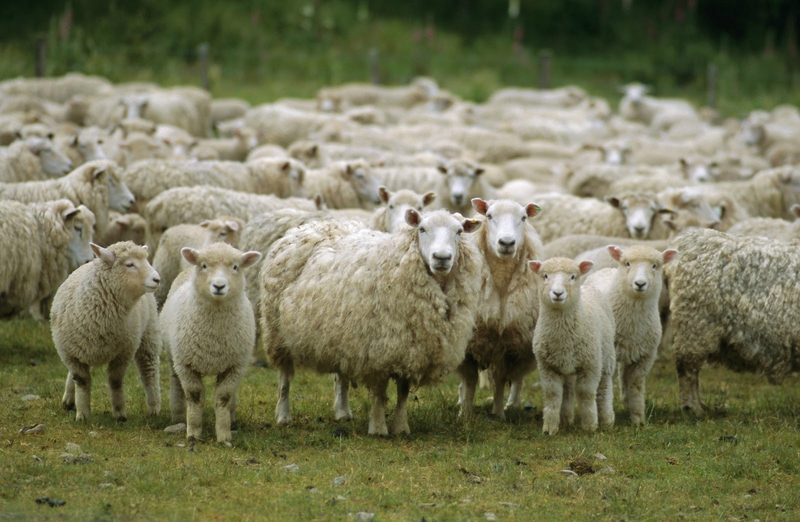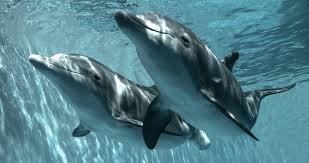Homosexuality in animals: many species concerned
Homosexual behavior is not restricted to humans. The following is a non-exhaustive list of the species concerned and the observed events ...
It is a scientific subject as little known as it is burning, whereas homosexuality is regularly presented by the homophobes as "against nature". All or almost all animals are likely to exhibit homosexual behavior, including in their natural environment. These are ethologists, those animal scientists, who say so. For most beasts, it would even be a matter of "natural" phenomena, in other words, to qualify in relation to what happens in human society: animals do not have the same awareness as ourselves, nor the same perception of the Look at the other. Nevertheless, the observations of bisexual or homosexual relations, whether it is love parade, close affection, true relationship or even parental life, have been documented for at least 450 species.
sheep

Researchers have identified natural homosexual preferences in flocks of sheep. According to an experimental study by the University of Science and Health in Oregon, USA, published in 2011, about 8% of rams type sheep are concerned. The study points out differences in the size of a cell group present in the sheep hypothalamus. A cluster of larger cells when it comes to adult individuals with heterosexual behavior.
dolphins

Homosexual relationships between dolphins were also observed in captivity. In his career, the American biologist Bruce Bagemihl, observed at the Duisburg Zoo, Germany, males rubbing their penises against each other and practicing anal sex ... and nasal. This last variant consists for a dolphin to introduce his penis into the vent of his partner. A sort of single nostril, this orifice at the top of the head of the fish, usually serves to breathe it.
Bison American

The phenomenon has been documented for the moment in the American bison: males court and climb, sometimes up to full penetration anal. The female bison also mount themselves very frequently. Hormonal, this last behavior is regularized by the rise of estrogens, a fortiori in the presence of a male.
Multiple assumptions
Licking of the genitals in hyena females, anal penetration between male giraffes or common brood for penguin dads ... Ethologists do not all agree on the meaning of homosexual behavior observed in nonhuman animals. In any case, these phenomena are common for several dozen species. It was therefore necessary for the researchers to speculate on the reason (s) for what Biologist Bruce Bagemihl calls "biological exuberance". Here are the main hypotheses, in chronological order, listed by Frank Cézilly, professor of behavioral ecology and author of La Sexualité animale:
In the eighteenth century, homosexual phenomena in nonhuman animals, considered as a kind of deviance, are attributed to external or internal elements harmful to beasts. Like promiscuity for animals raised in captivity or even an early hormonal disorder.
By observing repeated animal homosexual manifestations in nature, and not only anecdotally or in captivity, the scientific community must be well-versed in the idea, not very Darwinian - sexual intercourse, made "solely for procreation" These are not simple malfunctions. In 1999, Bruce Bagemihl's biological exuberance: animal homosexuality and natural diversity was confirmed. Encyclopedic, he compiles the homosexual behaviors found in hundreds of species (mammals, reptiles, birds, fish and even invertebrates). Far from being always anecdotal: in some species, animal homosexuality takes precedence over heterosexual activity ...
A hypothesis is spreading among the ethologists: homosexuality in animals would result from a socio-demographic imbalance. Indeed, if an equal number of males and females are born within species, one sex may begin to dominate the other in number. An imbalance sometimes caused by gestation, for example, by environmental disturbances: pesticides have a potential feminizing effect on embryos, gulls and gulls. It may also be that mortality is higher for either sex in adulthood. In parallel, the role played by the inherent lifestyle of a species is emerging: on the side of gorillas or bison, the ongoing spatial segregation between the sexes would go hand in hand with homosexual behavior. "But we do not explain thus the whole extent of animal homosexuality," relativizes Frank Cézilly in his scientific article "Gays, les bêtes!" Published by the journal Sciences Humaines. "Gender imbalance does not systematically lead to the development of homosexual behaviors, and these behaviors can exist without any imbalance. Moreover, [these hypotheses] do not in any way explain why individuals would prefer l 'Homosexuality to abstinence.'
Other assumptions have emerged over time. One of them points to the existence of "adaptive benefits" associated with homosexual behavior. The main of these benefits? That of a social dominance that puts everyone in agreement, stabilizes the hierarchies and diminishes the aggressiveness. For Frank Cézilly, this thesis is hasty: "In nature, it is not so clear (...) it is not uncommon for the hierarchy to be reversed ... The hypothesis of social dominance On the other hand, homosexual behaviors where no particular role can be assigned to the protagonists, as in cases of mutual sexual stimulation or homosexual parries observed, for example, in geese.
An alternative thesis gives homosexual behavior in nonhuman animals a central role of "regulating social tensions" (to obtain food, to end a dispute). But "in many species, homosexual behavior manifests itself independently of any aggressive context.", Frank Cézilly again tempers. So ? Then, according to the good old principle of the funnel, there remains the hypothesis, refined, of a homosexual behavior reinforcing positively the relations between the individuals of a species. Particularly in monkeys, the species closest to ours, where stimulation between two primates of the same sex would be a testament of confidence and future cooperation, especially against other primates of the sex in question. Not so fast! "Animal homosexuality is not the prerogative of sociable species." We wound Frank Cézilly. Sometimes it comes from purely practical needs: "It is frequent, for example, in the red flour beetle, a small beetle devastating foodstuffs. A recent hypothesis is that in this species homosexual Males to get rid of an old sperm with reduced performances to dispose of fresh sperm during heterosexual couplings ... ".
In short, there is no universal explanation for animal homosexuality, whose form, intensity, frequency or function vary from one species to another. The work of ethologists is in fact only beginning.
follow me @youmab
Congratulations @youmab! You have completed some achievement on Steemit and have been rewarded with new badge(s) :
Click on any badge to view your own Board of Honor on SteemitBoard.
For more information about SteemitBoard, click here
If you no longer want to receive notifications, reply to this comment with the word
STOPCongratulations @youmab! You have completed some achievement on Steemit and have been rewarded with new badge(s) :
Click on any badge to view your own Board of Honor on SteemitBoard.
For more information about SteemitBoard, click here
If you no longer want to receive notifications, reply to this comment with the word
STOPYou nailed it!